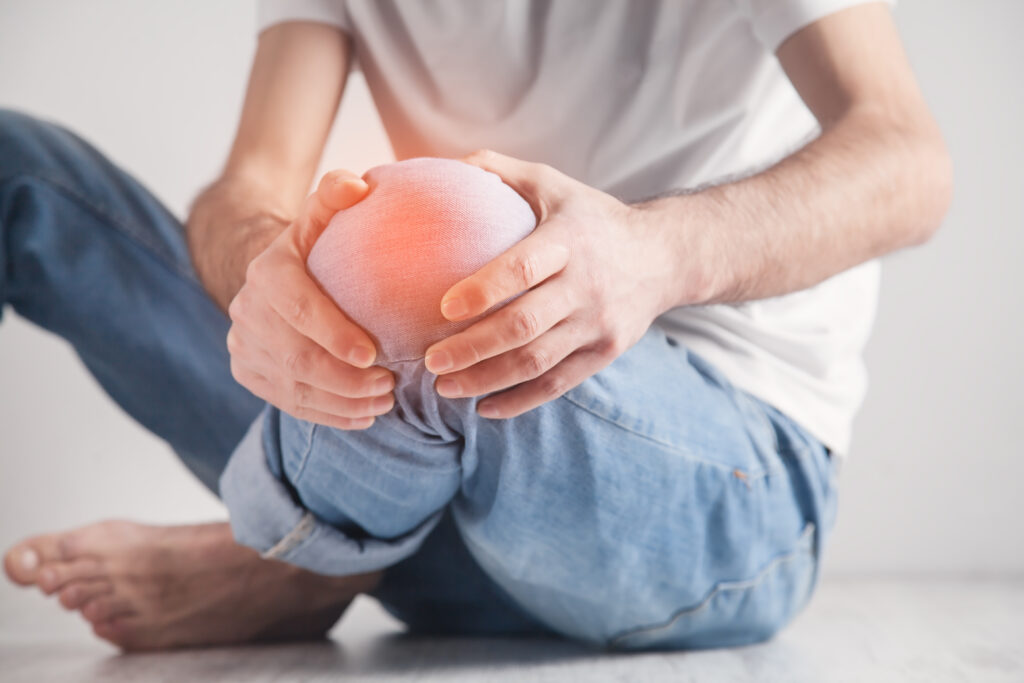You've probably faced the challenging reality of a sports injury, feeling both frustrated and uncertain about your next steps. In Calhoun, you'll discover a blend of community support and innovative therapies that can reshape your recovery experience. You might find yourself steering through local healthcare options and exploring methods you never considered before. As you reflect on your own journey, think about how these elements can influence not just your healing, but your overall approach to sports and fitness. What unexpected lessons could emerge from this process?
Understanding Sports Injuries
Sports injuries are more common than you might think, affecting millions of athletes each year. Whether you're a weekend warrior or a seasoned pro, understanding these injuries is essential for your safety and performance. They can range from minor sprains to severe fractures and concussions. Knowing the symptoms and types of injuries can help you take proactive steps to prevent them and respond effectively if they occur.
Common injuries include sprains, strains, fractures, and tendonitis. Sprains happen when ligaments stretch or tear, usually in the ankle or knee. Strains involve muscles or tendons and can occur in various areas, like the back or hamstrings. Fractures, or broken bones, can happen due to falls or direct impacts. Tendonitis, on the other hand, is an overuse injury that leads to inflammation of the tendons, often seen in the elbows or shoulders.
Factors contributing to sports injuries include improper warm-ups, lack of conditioning, and inadequate equipment. You might also be at risk if you don't heed your body's warning signs, like pain or fatigue. Ignoring these signals can lead to more severe injuries down the line.
My First Injury Experience
Experiencing your first injury can be a jarring wake-up call. You might remember the moment vividly—how it felt to push your limits, only to be abruptly halted by a sharp pain.
It's a surreal experience that forces you to confront your own vulnerability. You realize that no matter how strong or skilled you are, your body has its limits, and sometimes, you push too hard.
Reflecting on that moment, you can identify key lessons that come from experiencing your first injury:
- Listen to Your Body: Your body often sends signals before an injury occurs. Ignoring these signs can lead to setbacks.
- Rest is Essential: Taking time off isn't a sign of weakness; it's necessary for healing. Accepting rest can be one of the hardest lessons to learn.
- Mental Resilience Matters: Injuries aren't just physical; they can impact your mental game. Developing a positive mindset during recovery can make all the difference.
- Seek Support: Whether it's from teammates, coaches, or friends, leaning on your support system can help you navigate the emotional challenges of an injury.
Your first injury might feel like a setback, but it's also an opportunity for growth. Embracing these lessons can pave the way for a stronger comeback, both physically and mentally.
Navigating Local Healthcare
Finding the right healthcare provider after an injury can feel overwhelming, but it's essential for your recovery. Start by evaluating your needs—are you dealing with a sprain, fracture, or chronic issue? Knowing the specifics can help you choose the right specialist. In Calhoun, you'll find a range of options, from orthopedic surgeons to physical therapists, each offering unique expertise.
Next, tap into your local resources. Ask friends, family, or coaches for recommendations. Personal experiences can guide you to trusted professionals. You might also check online reviews, but be sure to weigh multiple sources to get a balanced view.
Once you've narrowed down your choices, don't hesitate to ask questions during initial consultations. Inquire about their experience with your specific injury type, treatment philosophies, and recovery timelines. This dialogue can help you gauge if the provider is a good fit for you.
Insurance coverage is another factor to keep in mind. Verify that your chosen provider accepts your insurance to avoid unexpected costs. If you're uninsured, discuss payment plans or sliding scale options upfront.
Finally, trust your instincts. You should feel comfortable with your provider and confident in their ability to guide your recovery.
Maneuvering local healthcare can be challenging, but taking these steps will empower you to make informed decisions, ultimately setting you on the right path toward healing and returning to your sport.
Innovative Therapy Options
After securing the right healthcare provider, exploring innovative therapy options can greatly enhance your recovery journey.
These therapies not only facilitate healing but also empower you to regain strength and mobility more effectively. Here are some options you might consider:
- Cryotherapy: This involves exposing your body to extremely cold temperatures to reduce inflammation and pain. It can accelerate recovery by boosting circulation and releasing endorphins.
- Hydrotherapy: Utilizing water for therapeutic purposes, hydrotherapy can relieve pain and improve flexibility. The buoyancy of water helps reduce stress on joints while allowing for gentle movement.
- Laser Therapy: This non-invasive treatment uses focused light to stimulate healing at the cellular level. It can help reduce pain and inflammation, making it ideal for conditions like tendonitis and muscle strains.
- Electrical Stimulation: This technique sends electrical impulses to stimulate nerves and muscles. It can help reduce pain, improve circulation, and even promote muscle re-education after an injury.
The Role of Community Support
Community support plays an essential role in your recovery from sports injuries.
Local partnerships can provide valuable resources, while encouragement from peers boosts your emotional strength.
When you surround yourself with supportive people, healing becomes a more manageable journey.
Local Partnerships and Resources
Support plays a crucial role in healing sports injuries, as local partnerships can provide athletes with essential resources and expertise.
When you're facing an injury, having a network of support can make all the difference in your recovery journey. Local partnerships not only enhance your access to care but also foster a sense of community that uplifts and motivates you.
Here are four valuable resources you can tap into:
- Physical Therapy Clinics: Local therapists specialize in sports injuries and can tailor rehabilitation programs to suit your needs.
- Sports Nutritionists: They can guide you in making dietary choices that promote healing and restore energy levels.
- Community Sports Organizations: These groups often offer workshops and training sessions focused on injury prevention and management.
- Local Gyms and Recreation Centers: Many facilities provide access to equipment and classes that can support your recovery while keeping you engaged.
Emotional Encouragement From Peers
In the midst of recovery, the encouragement you receive from peers can be a powerful motivator. When you're sidelined by an injury, it's easy to feel isolated, but your teammates and friends can lift your spirits. Their support reminds you that you're not alone in this journey.
Whether it's a quick text, a visit during rehab, or sharing their own experiences, your peers play a vital role in your emotional healing. You might find comfort in group workouts or team meetings, where everyone shares their struggles and victories.
These moments foster a sense of belonging and remind you that your journey is part of a larger story. As you face the challenges of recovery, their belief in your potential can reignite your determination.
Celebrate the small wins with your peers. When they cheer you on during your progress, you'll feel that spark of motivation to push harder. Remember, emotional support isn't just a nice-to-have; it's essential for your mental resilience.
Lean on your community, and let their encouragement help you overcome the obstacles on your path to recovery. Together, you'll emerge stronger, both physically and emotionally.
Mental Resilience in Recovery
Mental resilience plays an essential role in your recovery from sports injuries, influencing not only how you cope with physical setbacks but also how you approach the mental challenges that arise during rehabilitation.
Building this resilience helps you remain focused and motivated, even when the journey feels overwhelming.
To cultivate mental resilience, consider these key strategies:
- Set Realistic Goals: Break down your recovery into manageable milestones. Celebrate each small victory, as it reinforces your progress and keeps you motivated.
- Practice Positive Self-Talk: Replace negative thoughts with affirming statements. Remind yourself of your strength and ability to overcome obstacles. This mindset shift can greatly impact your emotional well-being.
- Stay Connected: Lean on your support network, including friends, family, and teammates. Sharing your feelings and experiences helps you process emotions and feel less isolated during tough times.
- Embrace Flexibility: Understand that setbacks are a natural part of the recovery process. Adapt your approach when necessary, and don't be afraid to reassess your goals.
This adaptability can reduce frustration and foster a more positive outlook.
Lessons Learned Through Setbacks
Setbacks can be frustrating, but they often come with valuable lessons that can enhance your resilience and growth. When you face an unexpected injury or a delay in your recovery, it's easy to feel defeated. However, these moments can teach you about patience and the importance of adjusting your goals. You learn that progress isn't always linear, and sometimes you need to take a few steps back before moving forward.
You also discover the significance of self-compassion. It's essential to be kind to yourself during these challenging times. Instead of berating yourself for not meeting your expectations, give yourself permission to feel what you're feeling. Acknowledging your emotions can lead to a more authentic recovery process.
Additionally, setbacks can reveal the strength of your support network. Leaning on friends, family, or teammates can deepen your relationships and remind you that you're not alone. Sharing your struggles can help you gain perspective and find encouragement from others who've faced similar challenges.
Most importantly, you gain insights into your body and its limits. Every injury teaches you something new, whether it's about your physical capabilities or how to listen to your body better. Embracing these lessons can transform your setbacks into stepping stones, ultimately guiding you toward a more informed and resilient athletic journey.
Preventing Future Injuries
Many athletes underestimate the importance of proactive measures in injury prevention. It's easy to focus solely on training hard and pushing your limits, but neglecting preventative strategies can lead to setbacks that hinder your progress.
By implementing a few simple practices, you can considerably reduce your risk of injury and enhance your overall performance.
Here are four essential steps to help you prevent future injuries:
1. Warm-Up and Cool Down: Always start your training sessions with a proper warm-up. This increases blood flow to your muscles and prepares your body for intense activity.
Similarly, cooling down helps your body recover and reduces muscle soreness.
2. Listen to Your Body: Pay attention to any pain or discomfort. Ignoring these signals can lead to more severe injuries.
If something doesn't feel right, take a break, and consult a professional if needed.
3. Strength and Flexibility Training: Incorporate strength and flexibility exercises into your routine. Strong, flexible muscles are less prone to injury.
Focus on the areas that are most vulnerable for your sport, whether that's your hamstrings, shoulders, or ankles.
4. Cross-Training: Engage in various forms of exercise to promote overall fitness.
This not only reduces the risk of overuse injuries but also enhances your athletic performance by working different muscle groups.
Celebrating Recovery Milestones
Recognizing and celebrating recovery milestones is essential for maintaining motivation throughout your healing journey. Each step you take towards recovery deserves acknowledgment, whether it's regaining full range of motion, completing a rehabilitation session, or simply feeling less pain. These milestones aren't just markers; they're achievements that propel you forward.
Start by setting clear, achievable goals at the onset of your recovery process. Maybe it's walking without a limp, or hitting a certain number of repetitions during physical therapy. As you reach each goal, take a moment to celebrate. This could be as simple as treating yourself to a favorite meal, sharing your progress with friends, or engaging in a relaxing activity you love. These celebrations reinforce your commitment and remind you of how far you've come.
Don't forget to track your progress. Keeping a journal or using an app can help you visualize your improvements over time. Each notation of success, no matter how small, builds a narrative of resilience and determination. When you look back at your journey, these recorded milestones will serve as powerful reminders of your strength.
Finally, consider involving your support network. Share your achievements with family and friends who can cheer you on. Their encouragement can amplify your joy and motivation, making your recovery process feel like a shared victory.
Conclusion
Healing from sports injuries can be a tough journey, but you don't have to go through it alone. Embrace the support of your community, explore innovative therapies, and remember to celebrate each small victory. Listen to your body and stay mentally resilient, as every setback is a lesson learned. By taking these steps, you can not only recover effectively but also prevent future injuries, setting yourself up for a stronger comeback. Keep pushing forward!



